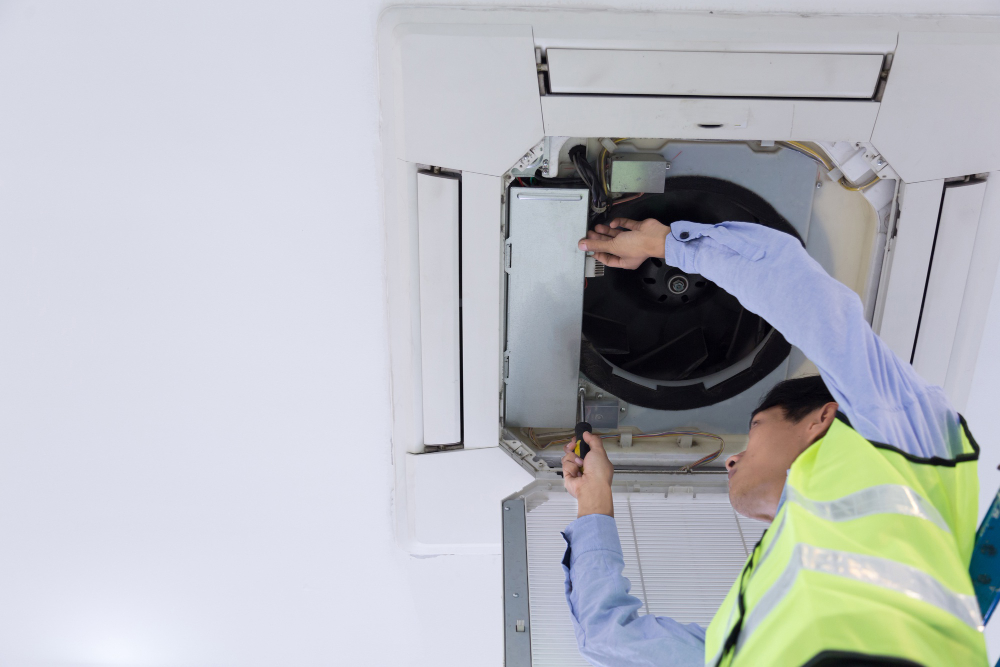Top Tips On HVAC Ductwork Maintenance

When it comes to the home, the unseen heroes are often as crucial as the obvious ones. Your HVAC ductwork is one such unsung component, quietly and efficiently distributing air throughout your home, keeping you comfortable in every season. Despite its crucial role, it’s common for homeowners to overlook ductwork maintenance, which can lead to poor indoor air quality, reduced energy efficiency, and costly repairs.
For those seeking to uphold the integrity of their HVAC system and ensure their ducts are as clean as a whistle, we've compiled a comprehensive list of ductwork maintenance tips. These straightforward steps can extend the life of your HVAC system, reduce energy bills, and most importantly, safeguard the air you and your family breathe.
1. Regular Inspections are Key
The first step in maintaining your HVAC ductwork is to routinely inspect it for any signs of damage or obstruction. Cracks, leaks, and disconnections can significantly reduce the efficiency of your system. Inspect duct joints for any loose connections and look for any small tears or punctures. Additionally, be vigilant for mold growth and assess for any blockages that could impede airflow.
2. Seal Leaks to Save Energy
If you find any leaks or breaches in your ducts, it’s imperative to address them promptly. Sealing leaks can help you save on energy costs by preventing conditioned air from escaping into unconditioned spaces like the attic or crawl spaces. Use mastic sealant or metal tape – not duct tape, which isn't suitable for long-term use in this application – to seal any leaks you find.
3. Maintain Cleanliness
It's no secret that the air passing through your ducts can accumulate dust, debris, and even allergens over time. A buildup of these contaminants not only diminishes indoor air quality but can also restrict airflow within the system. Change your air filter regularly—every 1-3 months depending on your filter type—and consider scheduling professional duct cleaning every 3-5 years.
4. Insulate for Efficiency
Proper insulation can be just as significant as sealing when it comes to energy efficiency. Insulated ducts not only maintain the temperature of the air as it moves from your HVAC unit to the living spaces of your home, but they also prevent condensation issues that can lead to mold or rust.
5. Consider Self-Diagnoses With Duct Testing
If you’re particularly savvy, you can perform a duct test yourself using a duct blaster or blower door. These tests allow you to find and measure leaks in your duct system so you can effectively target repairs. For a less hands-on approach, many HVAC professionals provide this service during routine maintenance visits.
6. Avoid DIY Repair Risks
While there are aspects of duct maintenance that are DIY-friendly, be cautious of taking on too much, especially if it involves accessing hard-to-reach or hazardous areas. If you're uncertain about a repair, it’s safer, and often more cost-effective in the long run, to consult a professional.
7. Monitor the Vents
Keeping your supply and return vents clear and unobstructed is a simple yet impactful way to maintain your ductwork. Ensure that furniture, drapery, or other items are not blocking these vents, as it disrupts the free flow of air throughout your home.
8. Seek Professional Duct Evaluation
For a thorough assessment of your duct system, including the size and integrity of your ducts, as well as their overall condition, consider having an HVAC professional conduct a ductwork evaluation. This specialist can also advise on issues such as balancing air distribution and whether your ducts are adequately sized for your home.
9. Plan for Regular Professional Maintenance
While there are many tasks a homeowner can tackle, regular professional maintenance is irreplaceable. An HVAC technician can identify and address issues that are beyond the scope of a DIY enthusiast, ensuring your system is well-tuned and your ductwork in optimal condition.
10. Update Your Ductwork When Necessary
Over time, ducts can become corroded, undersized, or inefficient due to changes in building structure and even in the insulation or environmental codes. If your ductwork is over 15 years old, or if you’ve made significant home renovations, it’s wise to consider updating your ductwork to improve your HVAC system's efficiency.
Investing time and resources into HVAC ductwork maintenance isn’t just about preserving an expensive system—it’s about ensuring the health and safety of your home and its occupants. By following these prudent guidelines, you will not only maintain clean and efficient ducts but also potentially ward off a number of HVAC-related headaches down the line. And remember, when it comes to advanced maintenance or repairs, don't hesitate to reach out to an HVAC supplier in Central Florida for expert assistance.
If you're looking for an HVAC supplier in Central Florida, contact Discount Air Supply today for more information. Whether it’s for routine maintenance, upgrading your heating and cooling system, or sourcing high-quality parts, their team can provide the expertise and products you need to keep your home's HVAC system running at its best. With their help, you can ensure that your ductwork is in top condition 24/7, 365 days a year.